Physical Address
304 North Cardinal St.
Dorchester Center, MA 02124
Physical Address
304 North Cardinal St.
Dorchester Center, MA 02124
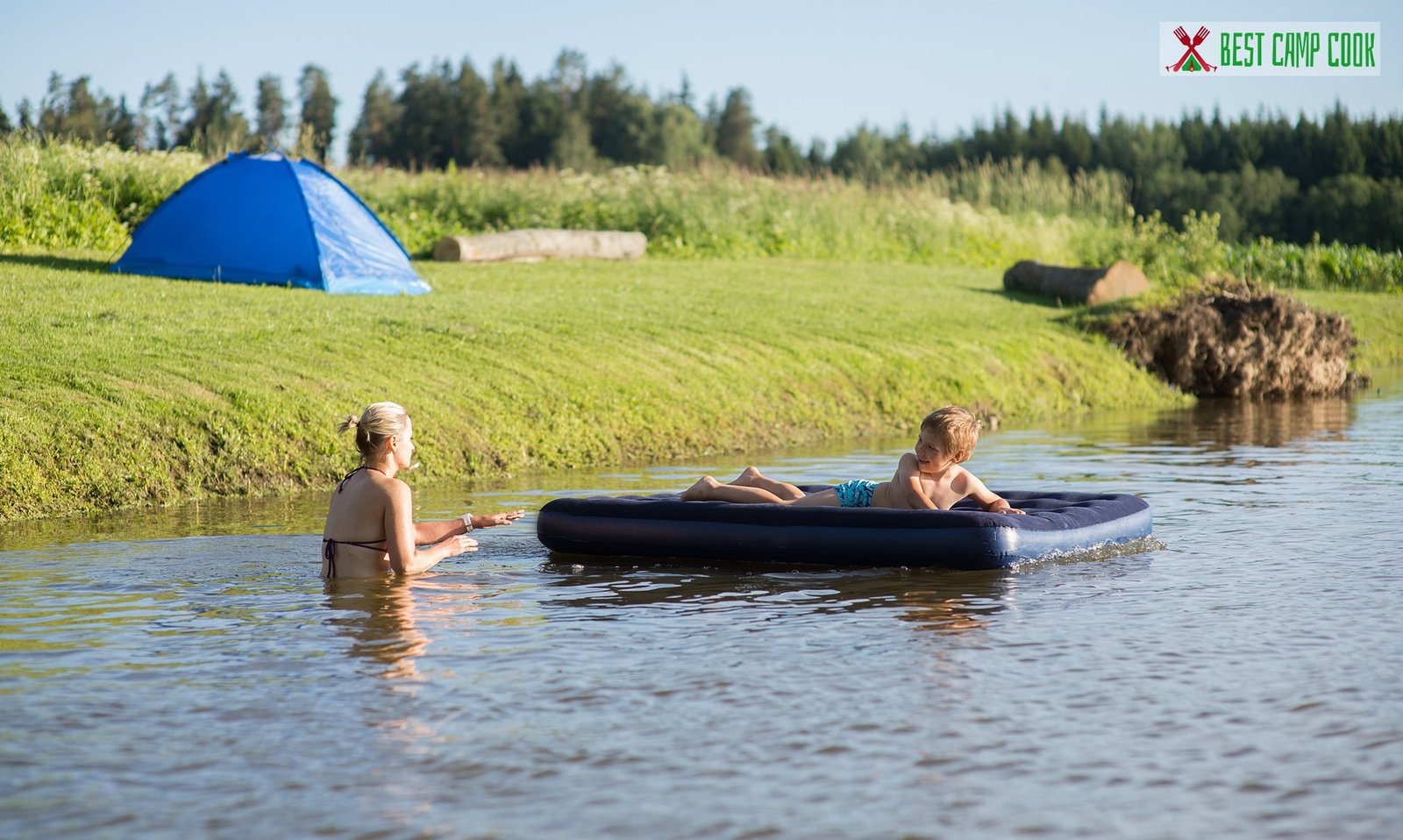
Curious about What is float camp? If you’re curious about this exciting outdoor adventure, you’ve come to the right place. Float camping combines the thrill of camping with the tranquility of floating on water.
It’s an incredible experience that allows you to immerse yourself in nature while enjoying the soothing sounds of the water. Whether you’re a seasoned camper or new to outdoor exploration, float camping offers a unique twist to traditional camping trips.
In this guide, we’ll dive into everything you need to know about float camp, from its benefits and planning tips to safety considerations and more. Get ready to embark on an unforgettable journey into the world of float camping!
Main Summary: What is Float Camp?
Float camp is an exciting outdoor adventure where campers float down rivers in rafts or canoes, combining camping and water activities. It offers a thrilling experience with scenic views, water fun, and camping camaraderie. Dive into the wonders of float camp and embrace nature’s beauty!
Float Camp is a unique outdoor adventure that combines camping and floating along rivers or streams. It offers an exciting opportunity to immerse yourself in nature while enjoying the serenity of floating on water. Whether you’re a nature enthusiast, an adventure seeker, or simply looking for a new and refreshing experience, float camping has something to offer for everyone.
Float camping allows individuals to fully immerse themselves in the natural environment. Being surrounded by serene waterways, picturesque landscapes, and diverse wildlife creates a deep connection with nature, promoting relaxation, stress reduction, and a sense of awe.
Floating along rivers or lakes provides a unique perspective of the surrounding scenery. From the water, campers can witness stunning reflections, discover hidden coves, and explore remote areas inaccessible by land, offering a fresh and captivating viewpoint of the natural world.
Float camping combines the thrill of outdoor adventure with the tranquility of camping. It presents opportunities for exploring new waterways, navigating gentle currents or challenging rapids, and discovering hidden gems along the journey, fostering a spirit of exploration and excitement.
Float camping offers a peaceful escape from the noise and distractions of urban life. The gentle sounds of water lapping against the raft and the absence of modern technology create an atmosphere of tranquility, allowing campers to unwind, rejuvenate, and reconnect with themselves and nature.
Float camping provides a chance to disconnect from the digital world. By leaving behind the constant presence of screens and devices, individuals can embrace a simpler, more mindful way of living, fostering a deeper connection with the natural surroundings and those they are camping with.
Float camping is an ideal opportunity to spend quality time with friends, family, or loved ones. With limited distractions and a shared outdoor experience, it allows for meaningful conversations, bonding, and creating lasting memories together.
Floating along waterways increases the chances of encountering diverse wildlife. From birds swooping overhead to fish jumping out of the water, and possibly even glimpses of larger animals along the shore, float camping provides unique opportunities for wildlife observation and appreciation.
Float camping often takes campers to remote and secluded locations that are less frequented by other outdoor enthusiasts. This escape from crowded campsites and busy trails offers a sense of solitude, privacy, and the chance to experience nature in its purest form.
Float camping promotes environmental awareness and a sense of responsibility towards conservation. It encourages campers to adhere to Leave No Trace principles, respect wildlife habitats, and minimize their impact on the natural surroundings, fostering a deeper appreciation and commitment to preserving the environment.
Float camping provides physical exercise through paddling or rowing, contributing to improved cardiovascular fitness and muscle strength. Additionally, being in nature has been shown to have positive effects on mental health, reducing stress, improving mood, and enhancing overall well-being.
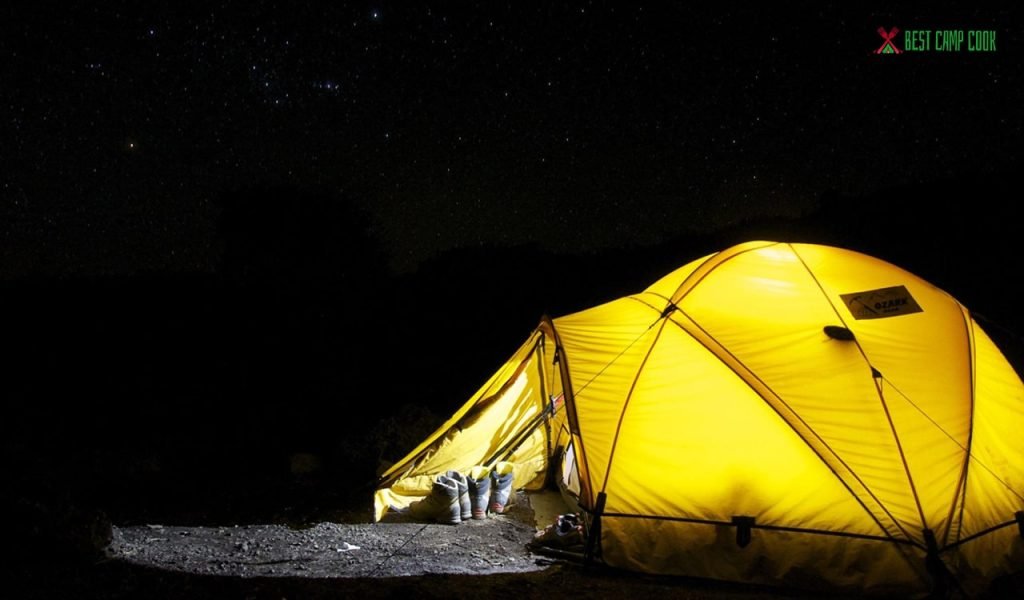
Image Source: Pixabay
Before embarking on a float camping trip, careful planning is essential to ensure a safe and enjoyable adventure. Here are some key considerations:
Research and select a suitable river or stream for your float camp trip. Consider factors such as accessibility, water conditions, camping opportunities along the route, and any permits or regulations that may apply.
Gather the necessary equipment, including inflatable floats or rafts, paddles, life jackets, camping gear, food, water, and navigation tools. Ensure that your equipment is in good condition and appropriate for the water conditions you’ll encounter.
Familiarize yourself with basic water safety guidelines and techniques. Wear a properly fitted life jacket at all times while floating, and be aware of potential hazards such as submerged rocks or fallen trees. Share your itinerary with someone reliable and consider traveling with a group for added safety.
Check the weather forecast and water levels before your trip. Avoid floating during inclement weather or when water levels are unusually high or swift, as it can pose risks.
Plan your camping spots along the river route, ensuring they comply with any regulations or restrictions. Pack lightweight camping gear suitable for the conditions and practice Leave No Trace principles to minimize your impact on the environment.
Carry a reliable means of communication, such as a fully charged cell phone or a two-way radio. Familiarize yourself with emergency procedures, including how to respond to potential accidents or injuries.
While float camping can be a delightful experience, it’s crucial to prioritize safety and environmental stewardship. Here are some safety tips and environmental considerations to keep in mind:
Stay updated on weather forecasts before and during your float camping trip. Be prepared for changing weather conditions and have appropriate gear such as rain gear, sun protection, and extra layers. Avoid camping or floating during severe weather events such as thunderstorms or high winds.
If campfires are allowed and conditions permit, follow safe campfire practices. Use designated fire rings or established fire pits, keep fires small, and completely extinguish them before leaving the campsite. Check local regulations for any fire restrictions in place.
Always wear a life jacket, even if you’re a strong swimmer. Be aware of your surroundings, watch for potential hazards, and avoid risky behaviors such as excessive alcohol consumption while floating.
Protect yourself from the sun’s harmful rays by wearing sunscreen, a hat, and sunglasses. Consider using sun-protective clothing to minimize sun exposure during extended periods on the water.
Respect the environment by leaving your camping spots and the riverbanks cleaner than you found them. Dispose of waste properly, pack out all trash, and avoid damaging vegetation or disturbing wildlife habitats.
Admire wildlife from a distance and avoid feeding or approaching animals. Keep food securely stored to prevent attracting wildlife to your campsite. Weather Awareness: Stay informed about weather conditions and be prepared for changes. Seek shelter if lightning or severe weather is imminent.
Familiarize yourself with and abide by the specific regulations and guidelines of the float camping area. This includes permits, camping restrictions, fire regulations, and any specific rules or recommendations set by local authorities or land management agencies.
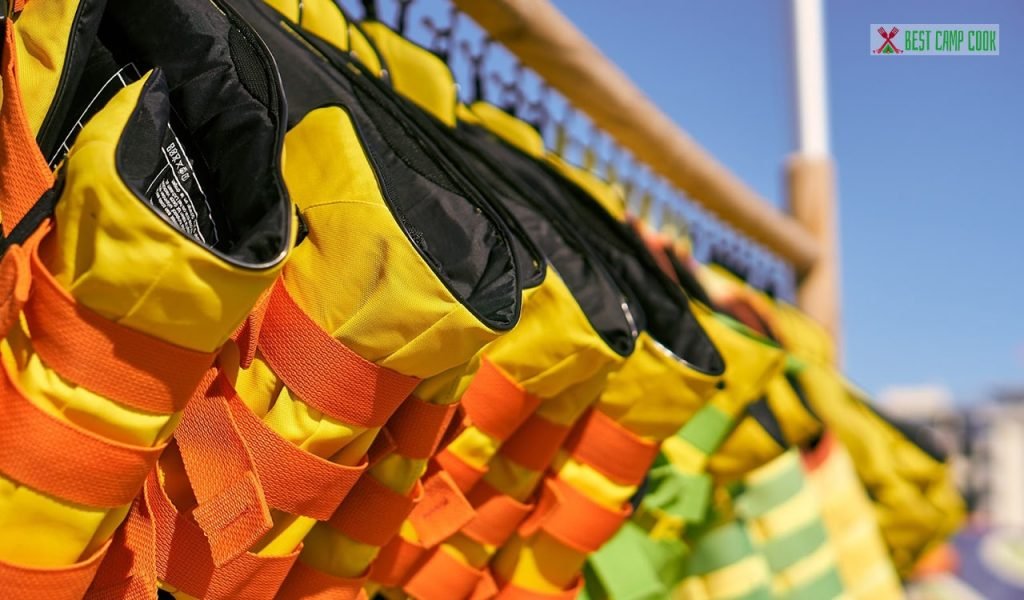
Image Source: Pixabay
When planning a float camping trip, you may not have all the necessary equipment readily available. Fortunately, there are various options for renting float camp gear, ensuring you have everything you need for a successful adventure. Here are some commonly rented float camp equipment options:
Inflatable floats and rafts are essential for float camping, providing a comfortable and buoyant platform for your journey on the water. Many outdoor gear rental companies offer a range of options, from single-person floats to larger rafts that can accommodate multiple campers. Look for durable and reliable inflatables designed for river use, ensuring they are in good condition and properly inflated before setting off.
Paddles are necessary for maneuvering your float along the water. When renting paddles, consider the material and design. Lightweight and sturdy options are ideal, allowing for easy handling and efficient propulsion. Adjustable paddles are also advantageous, enabling you to customize the length for optimal comfort and control.
Safety should always be a priority when engaging in any water-based activity. Renting properly fitted life jackets is essential for float camping, especially if you don’t own one. Ensure that the life jackets comply with safety regulations and provide adequate buoyancy. It’s crucial to wear a life jacket at all times while floating, regardless of your swimming ability.
If you don’t have camping gear or prefer not to bring your own, consider renting camping equipment. This may include tents, sleeping bags, sleeping pads, cooking utensils, and camp chairs. Opt for lightweight and compact gear suitable for outdoor use, ensuring it’s in good condition and clean.
In addition to life jackets, other safety equipment can be rented to enhance your float camp trip. This may include throw bags or rescue ropes, which can be useful for emergency situations or aiding fellow campers. Always familiarize yourself with the proper use of safety equipment before setting out on your adventure.
Before selecting a rental company, research local options and read reviews to ensure reliability and quality. Make reservations well in advance, especially during peak seasons, to secure the equipment you need for your float camp trip. Remember to return the rented equipment promptly and in good condition to avoid additional charges.

Image Source: Pixabay
Float camping provides a unique opportunity to enjoy delicious meals in the great outdoors. While it may require some planning and preparation, the experience of cooking and dining in nature can be incredibly rewarding.
Here are some float camp cooking and meal ideas to enhance your culinary adventure:
Before your float camp trip, it’s helpful to do some meal prep at home to make cooking at the campsite easier. Consider pre-cutting vegetables, marinating meats, or preparing sauces and dressings in advance. Store the prepped ingredients in sealable bags or containers to keep them fresh.
Campfires offer a classic and rustic way of cooking during float camping trips. You can grill meats, roast vegetables, or even make foil-wrapped meals cooked directly in the coals. If you’re planning to pack boiled eggs for a float camp, the process is slightly different from packing raw eggs.
Boiled eggs can be a convenient and nutritious snack during your camping trip. Bring a portable grill grate or use a makeshift grill over the fire to cook your food. Don’t forget to pack essential campfire cooking tools such as tongs, spatulas, and oven mitts.
One-pot meals are convenient for float camping, as they minimize the number of dishes and cooking utensils needed. Consider dishes like chili, stew, or pasta dishes that can be cooked in a single pot or Dutch oven. These meals are hearty, filling, and easy to prepare, making them ideal for outdoor cooking.
Foil packet meals are another popular option for float camping. Simply wrap your choice of meat, vegetables, herbs, and seasonings in aluminum foil and place them on hot coals or a grill. The foil traps the flavors and juices, resulting in a delicious and mess-free meal. You can customize the ingredients to suit your preferences and dietary restrictions.
If campfires are not permitted or convenient, portable stoves provide a reliable cooking option. These compact stoves run on propane or butane and offer precise heat control. You can cook a variety of meals using pots, pans, or even a portable grill attachment.
Make sure to bring extra fuel canisters, and always operate the stove in a well-ventilated area. Washing dishes during a float camp can be a bit different from traditional camping due to limited resources and the need to minimize environmental impact.
Don’t forget to pack some snacks for your float camping trip. Choose lightweight and packable options such as trail mix, granola bars, dried fruits, or jerky. These snacks provide quick and convenient energy boosts during your outdoor activities. Remember to practice proper food storage and waste disposal to minimize your impact on the environment. Store food in secure containers or coolers to prevent attracting wildlife.
Dispose of food scraps and packaging responsibly, following Leave No Trace principles. Float camp cooking can be a delightful and creative experience, allowing you to savor delicious meals surrounded by nature’s beauty. Experiment with different recipes, embrace the simplicity of outdoor cooking, and enjoy the flavors that come to life in the wilderness.
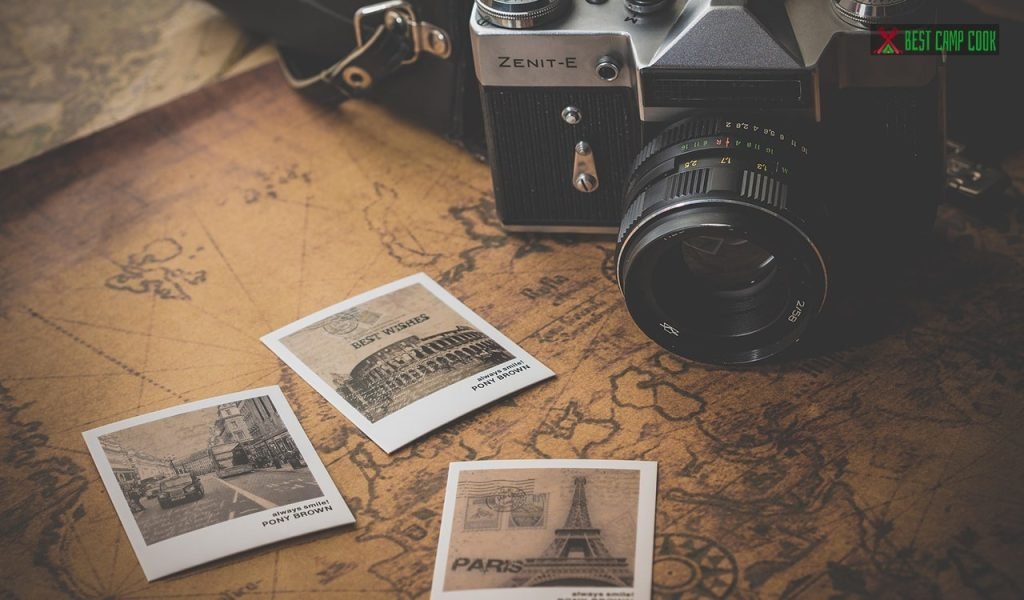
Image Source: Pixabay
Float camping offers breathtaking scenery and unique photo opportunities. Capturing the beauty of your surroundings can help preserve memories and share your experiences with others. Whether you’re an amateur or a seasoned photographer, here are some float camp photography tips and techniques to help you capture stunning images:
Before your float camping trip, research the location you’ll be visiting. Look for notable landmarks, interesting wildlife, or specific natural features that you’d like to photograph. Knowing the area’s highlights can help you plan your shots and make the most of your time on the water.
When it comes to photography equipment for float camping, it’s important to strike a balance between functionality and portability. Consider bringing a versatile camera that is suitable for outdoor conditions. A DSLR, mirrorless camera, or even a high-quality smartphone can capture excellent images. Bring a variety of lenses if possible, including wide-angle lenses for landscapes and telephoto lenses for wildlife shots.
Waterproofing your camera equipment is essential when engaging in float camping photography. Invest in a waterproof camera bag or protective housing to keep your gear safe from water splashes or accidental submersion. Lens filters can also help protect your lenses from water droplets and minimize glare in bright conditions.
The soft and warm light during golden hour (early morning or late afternoon) can add a magical touch to your float camp photos. Take advantage of this gentle light to capture stunning landscapes, silhouettes, or portraits of your fellow campers. Avoid shooting directly into the sun to prevent lens flare, and use the natural light to create depth and dimension in your images.
Float camping offers plenty of opportunities for action shots. Experiment with capturing the movement of your float on the water, the excitement of paddling, or the joy on the faces of your companions. Use burst mode or a fast shutter speed to freeze action and ensure sharp images.
Pay attention to composition to create visually appealing images. Use the rule of thirds to position your main subjects off-center and create a balanced composition. Incorporate leading lines, such as the river or tree branches, to guide the viewer’s eye through the frame. Experiment with different angles and perspectives to add interest and depth to your photos.
Float camping provides a relaxed and immersive environment, perfect for capturing candid moments and genuine expressions. Keep your camera ready to document the laughter, conversations, and interactions that occur naturally during the trip. These candid shots can often evoke the most authentic memories.
When photographing wildlife during your float camping adventure, always prioritize their well-being and safety. Maintain a respectful distance and avoid disturbing their natural behavior. Use a telephoto lens to capture close-up shots without encroaching on their habitat.
Remember to follow any guidelines or regulations related to wildlife photography in the area you are visiting. Float camp photography is a wonderful way to document your outdoor experiences and share them with others. By following these tips and techniques, you can capture the essence and beauty of your float camping trip while immersing yourself in the wonders of nature.
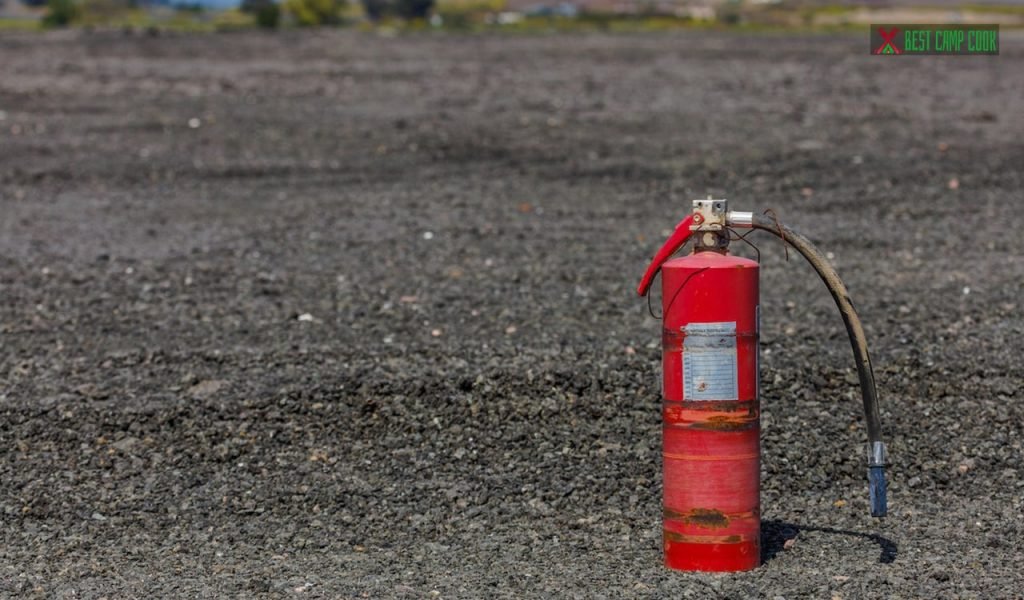
Image Source: Pexels
Float camping is a thrilling and adventurous activity, but it’s crucial to prioritize safety and be prepared for any unforeseen circumstances. Along with proper planning and precautions, carrying safety equipment and emergency communication devices can help ensure your well-being during your float camp trip. Here are some essential safety measures and devices to consider:
Life jackets and PFDs are essential safety gear for float camping. Ensure that each person on the trip has a properly fitted and Coast Guard-approved life jacket. Wearing a life jacket significantly increases your chances of survival in case of accidental immersion or emergencies. Choose a PFD suitable for the specific water conditions you’ll encounter during your float camp.
Before embarking on your float camp trip, inform a trusted friend or family member about your itinerary. Share details such as your starting point, planned route, camping locations, and expected return date. This information will serve as a float plan and can be critical in case of a delay or emergency. Provide emergency contact numbers to be reached in case someone needs to report your absence or seek assistance on your behalf.
Carrying reliable communication devices is vital for float camping safety. While cell phones can be useful, coverage may be limited or non-existent in remote areas. Consider carrying alternative communication devices such as handheld VHF radios, satellite phones, or personal locator beacons (PLBs). These devices can allow you to communicate with emergency services or call for assistance, even in areas with no cellular reception.
A well-stocked first aid kit is essential for addressing minor injuries or medical emergencies during your float camp trip. Include items such as bandages, antiseptic ointment, pain relievers, blister pads, and any necessary prescription medications. Familiarize yourself with basic first aid procedures and consider taking a first aid course to enhance your knowledge and confidence in handling emergencies.
In case of unexpected delays or adverse weather conditions, having emergency shelter and survival tools can make a significant difference. Carry lightweight emergency blankets, tarps, or tents that can provide shelter and protection from the elements. Additionally, pack essential survival tools such as a knife, waterproof matches, a compass, and a whistle. These items can assist in navigation, starting a fire, or attracting attention in case of an emergency.
Respecting the environment and practicing Leave No Trace principles are crucial for both your safety and the preservation of natural spaces. Educate yourself about the specific rules and regulations of the area you’ll be camping in. Avoid damaging vegetation, dispose of waste properly, and leave the campsite as you found it. Be mindful of fire safety, follow any fire restrictions, and always extinguish campfires completely before leaving.
Acquiring basic water safety skills and knowledge is essential for float camping. Learn about river currents, hazards, and navigation techniques specific to the waterways you’ll be exploring. Familiarize yourself with paddling techniques and rescue procedures. Taking a certified safety and rescue course can provide valuable skills and confidence in handling emergencies.
One common mistake in float camping is inadequate planning and research. Failing to choose a suitable location, understanding regulations, or checking water conditions can lead to unexpected challenges or safety hazards.
Neglecting safety measures is a significant mistake. Not wearing life jackets, underestimating water currents, or lacking knowledge of basic water safety can put float campers at risk.
Another mistake is either overpacking or underpacking. Overpacking can make the journey cumbersome and limit mobility while underpacking can lead to essential items being overlooked, impacting comfort and safety.
Choosing inappropriate or low-quality gear is a mistake that can affect the overall float camping experience. Investing in reliable inflatable rafts, paddles, and safety equipment is essential to ensure a smooth and enjoyable trip.
Disregarding environmental conservation practices is a mistake that can harm natural ecosystems. Failing to follow Leave No Trace principles, improper waste disposal, or damaging vegetation can impact the beauty and sustainability of float camping locations.
Ignoring weather forecasts and not being prepared for changing conditions can be a mistake. Unexpected storms or temperature drops can pose risks and make float camping uncomfortable or dangerous.
Neglecting to plan and pack sufficient food and water supplies is a mistake that can lead to hunger, dehydration, or reliance on unhealthy alternatives. Planning meals and carrying ample water are essential for a successful float camping trip.
Attempting float camping without basic navigation skills can result in getting lost or disoriented. Understanding map reading, using GPS devices, and having knowledge of waterway navigation are important to navigate safely and reach intended destinations.
Failing to carry a well-stocked first aid kit or lacking knowledge of basic first aid techniques is a mistake that can compromise the safety and well-being of float campers. Accidents or injuries can occur, so being prepared to handle minor medical situations is essential.
Choosing an improper or unsafe campsite is a mistake that can impact comfort, security, and the overall float camping experience. Avoid setting up camp in low-lying areas prone to flooding, near unstable terrain, or in restricted zones to ensure a safe and enjoyable stay.
In conclusion, float camp is an extraordinary outdoor experience that combines the joys of camping with the exploration of waterways. It involves using inflatable rafts, canoes, or kayaks to navigate rivers or lakes while setting up campsites along the water’s edge. Float camping offers a unique opportunity to disconnect from the digital world, reconnect with nature, and embark on thrilling adventures.
Whether gliding along calm waters or navigating exciting rapids, float camping allows individuals to immerse themselves in breathtaking landscapes, encounter diverse wildlife, and create cherished memories. It is a remarkable way to find tranquility, discover hidden gems, and embrace the serenity of the great outdoors.
Float camping involves selecting a river or stream suitable for the adventure, then using inflatable rafts or canoes to travel downstream. Campers camp along the route, enjoying nature and the soothing sounds of the water throughout the trip.
Float camping offers numerous benefits, including immersion in nature, unique perspectives of scenery, adventure, relaxation, and quality time with loved ones. It provides a chance to disconnect from technology and foster environmental awareness.
To plan a float camping trip, research suitable waterways, check regulations, and consider water conditions. Gather appropriate gear, create a float plan, and carry communication devices for emergencies. Prepare meals ahead and follow Leave No Trace principles.
Essential gear for float camping includes inflatable floats or rafts, paddles, life jackets, camping equipment, communication devices, and a first aid kit. Properly fitted life jackets are crucial for safety during the adventure.
Float camping can be safe with proper planning, adherence to safety measures, and awareness of water conditions. Wearing life jackets, familiarizing oneself with water safety, and carrying communication devices are essential for a safe trip.
Yes, you can go float camping even if you don’t own equipment. Many outdoor gear rental companies offer inflatable floats, paddles, life jackets, and camping gear for rent, allowing you to enjoy the adventure without owning all the gear.
For a float camping trip, pack essentials such as camping gear, food, water, navigation tools, and safety equipment. Don’t forget sun protection, waterproof bags, a portable stove, and items for Leave No Trace practices.
Yes, there may be special regulations for float camping depending on the location you choose. Some areas require permits or have restrictions on camping locations, campfire usage, and waste disposal. It’s important to research and familiarizes yourself with the specific regulations of the waterway or park you plan to float camp in. Check with local authorities or visit the official website of the managing agency for up-to-date information and guidelines.